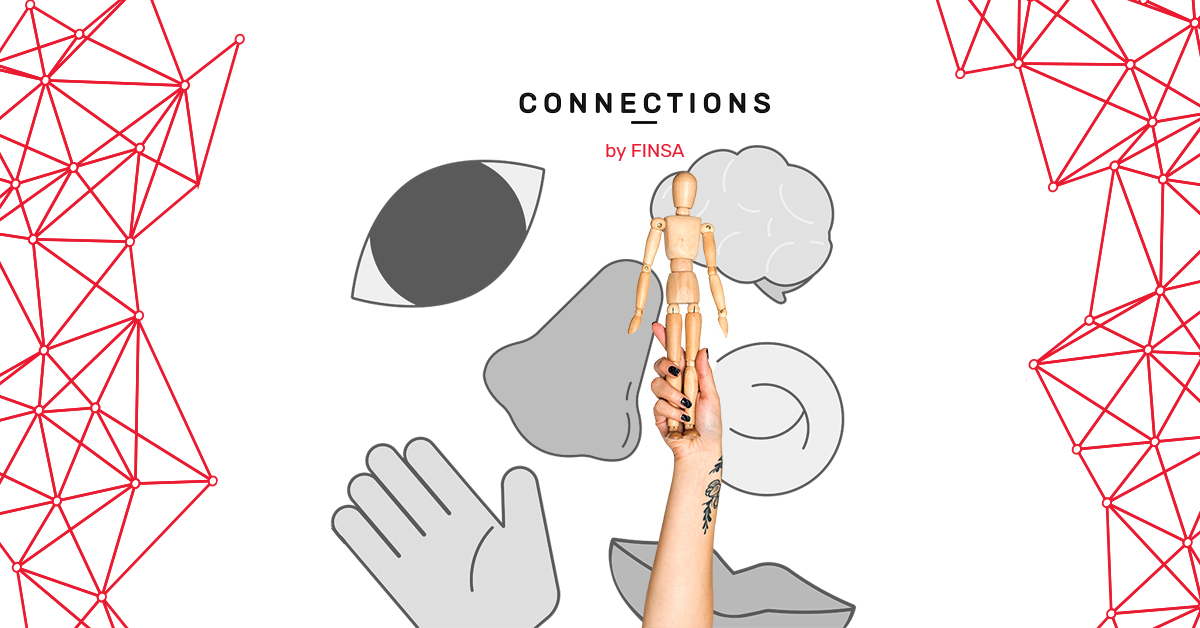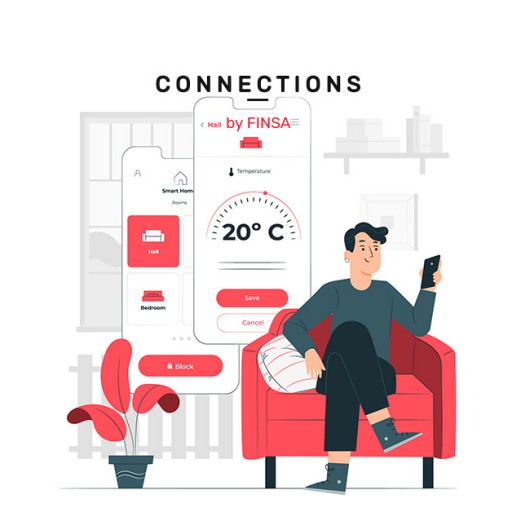When designing a product, a building, or interiors, usually the desired shape or form is considered first, and then one would look for a material that can adapt to this idea. Lara Álvarez Bosch suggests the possibility of “creating by starting with the material”, analysing its properties and what it can do to see if it can be used for design.
The materials designer
Materials designers have existed since the beginnings of industry, including chemists and experts in certain sectors who were in charge of optimising materials or looking for new alternatives. Creating based on the material and experimenting with materials is something that has only been recently embraced by design schools, but it has awakened a growing interest.
Lara Álvarez landed in materials design after studying industrial design and discovering that the fact that she was drawn to the more scientific aspect of design led her to a passion for materials. She completed her studies with a degree in materials engineering and focused on working with natural materials that were more sustainable or bio-based, such as vegetable fibres and leathers or bioplastics. “Some of them are materials whose main ingredient has always been used, but more in artisanry [than in industry]. On an industrial level, other types of materials that didn’t come from natural resources were often used,” says Lara. But that’s all changing.
https://www.instagram.com/p/Bqa7ic9Bhe_/?utm_source=ig_web_copy_link
Natural vs synthetic
Lara points out an increase in companies looking to use materials that are more sustainable and less harmful to the environment. However, experimenting with the design of materials made from natural sources is still a more a part of the ‘maker’ culture and the artisan world.
This is the complete opposite of what happens in synthetic materials development, an industry which must be equipped with the latest technology. Working with certain natural materials can be easier. For example, they melt at lower temperatures, they can be handled without using special protection, and they don’t need a specialised workspace. The final product is usually not as resistant as one that has been subjected to lab investigations, but Lara suggests that “what’s interesting about experimentation is that you start from a more open and creative place which gives rise to new options that hadn’t been considered previously. After that, if you want to optimise the material, you will probably have to contact a lab or tech centre. In the end you will have a new material with new characteristics and biological compatibilities that are more sustainable”.
https://www.instagram.com/p/Bqh2XENBqH-/?utm_source=ig_web_copy_link
Developing your own materials
After spending some time following blogs and reading newsletters about the world of materials, Lara Álvarez decided to take the leap and start experimenting herself. She contacted organisations and companies that worked with natural materials and experimentation, and from there she started making her own materials. Her goal: to create a material which could be used on an industrial scale.
One of Álvarez’s contacts was Materiom, a library of recipes for natural materials. “It interested me because it encouraged experimentation with materials that were sustainable, kind to the environment, non-toxic, easily accessible, and that could be handled without the need for big machines or chemistry knowledge.” Lara Álvarez presented samples at various events, including a bioplastic made from wood shavings that had been discarded by a carpenter.
https://www.instagram.com/p/Bqz3FzbBFzU/?utm_source=ig_web_copy_link
The rise of sustainability
The knowledge she had gained led Lara Álvarez to do consulting jobs for Materfad, specialising in sustainable materials. However, she eschews this term because “sustainability isn’t just about the material being used. It also involves the processes to which the material has been subjected, the energy required to create and destroy the product, its design, and the logistics”. She provided an example to help us grasp the concept: society is engrossed in a fight against plastics; however, for some products, plastics are more sustainable than other existing alternatives, because they are lighter and malleable, they allow the product to last longer, or they work the way the product needs them to.
Currently, the majority of questions that Materfad receives are about how to substitute these materials for other, more sustainable ones. There are many options, but their use is still restricted by their higher prices, which mostly come from their short production time, making the final product less competitive on the market. However, they have become more widely used thanks to new regulations and brands that are starting to take notice, like in the world of fashion, where more sustainable collections are being created and the origins of materials are being made clear. Lara notes the possibility of encouraging their use by starting in design schools and showing the importance of respecting the environment through creation based on local resources or waste products.
https://www.instagram.com/p/BU_qyvWAF9B/?igshid=gr4ra59te4dw
Useful trash: creating materials from waste products
The key is “not seeing it as rubbish but rather as a material, because in the end everything that surrounds us is made up of materials”. This is closely linked to the circular economy, given that all processes for creating materials generate waste products. But these can be useful too.
One of Lara Álvarez’s latest experimentation projects was participating in a MaDe Elisava Workshop which focused on experimenting with materials made using waste from the food industry. She developed two ideas for materials made from fruit and vegetables from local markets, where between one third to half of the products for sale are thrown away because they are “ugly”. Lara drew attention to the huge quantity of waste generated that could be used, which is also the case with other basic ingredients that are not used because we still haven’t figured out what to do with them.
https://www.instagram.com/p/B3q5OmenAlx/?utm_source=ig_web_copy_link
https://www.instagram.com/p/B3erhtXodP6/?utm_source=ig_web_copy_link
Optimising local natural resources
In addition to the importance valuing waste, Lara Álvarez highlights the work of designers in optimising locally-sourced natural resources, which should always be accompanied by social and economic development at a local level. This is what Superlocal does, as well as Fernando Laposse‘s projects, as he always works with local materials in order to promote the regional economy from a social perspective.
https://www.instagram.com/p/B3P5mgXDhYE/?utm_source=ig_web_copy_link
If there is one thing that this materials expert is sure about, it’s that “all materials are good materials if they are used well. The mistake arises when we don’t know how to identify a material’s properties, its characteristics, and what it is capable of in order to find the best use for it”.




